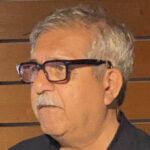M S Dhillon
(Chandigarh, Inde)
ACL avulsion fractures are not as frequent as ACL rupture ; however, the injury becomes complex, as many times these injuries are seen in children, and often there may be associated injuries in the same knee. There are different degrees of avulsion, and the treatment depends upon degree of fragment displacement and or associated injury or stretching of the ACL itself. The age of the patient and the delay in diagnosis have a significant role in defining treatment options; neglected cases can have knee flexion deformity, and some may have injury/erosion on corresponding femoral condyle.
The management options have evolved from formal open reduction and screw fixation to arthroscopic reduction and fixation with screws, fibre wire and even tightrope. In underdeveloped countries these cases often present with neglect and here the problems becomes more difficult as these bony fragments may hypertrophy or the crater maybe filled with scar tissue impeding reduction. The methods of reduction and fixation in acute as well as chronic cases are discussed and the outcomes of both acute and chronic cases can be good.
Special issues in ACL avulsion in children include saving the physeal plate and minimising growth plate injury. The key rehabilitation focus should be to achieve stability, obtain full extension and early range of motion.


